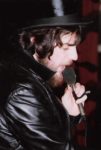 Strange the way things work out. This piece was programmed for publication today and by some quirk of fate it’s the same day that our long-time correspondent from ‘Up North’, Steve Jenner, achieved a lifetime ambition by starting his regular Sunday morning show on Caroline Flashback. Steve’s been in radio for many years, but he’s been a fan of live music for many more and 2020 has been a bit of a shock to the system. Here are some of the things he’s missed in this year of lockdown and its variants:
Strange the way things work out. This piece was programmed for publication today and by some quirk of fate it’s the same day that our long-time correspondent from ‘Up North’, Steve Jenner, achieved a lifetime ambition by starting his regular Sunday morning show on Caroline Flashback. Steve’s been in radio for many years, but he’s been a fan of live music for many more and 2020 has been a bit of a shock to the system. Here are some of the things he’s missed in this year of lockdown and its variants:
The Five Ritual ‘Live’ Things Missing from My Life This Year
 Anticipation.
Anticipation.
You get your ticket and as the date nears you start to think about it. What will the line-up be? Will they play my fave tune of theirs? How’s the new stuff going to play in a live setting? Will he/she be ‘on it’ or will it be a ‘routine gig’? Has it sold out? Will there be any proper beer?
 Going in.
Going in.
Milling about inside the venue, eyes getting accustomed to the dark, checking out the bar and the bogs, staking out a space, hearing the noise levels rise as the pre-event music kicks in and the punters start to flow through the doors. Getting that ‘tingly’ thing you do.
 Tension build-up.
Tension build-up.
Main act is habitually fashionably late and there is a palpable build up of tension / expectation in the crowd. There’s a bit of good-natured jostle near the front. Torches keep flicking on and off onstage and shadowy figures flit from mike to monitor and desk. The crowd starts a ‘stomping’ routine.
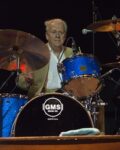 Bang.
Bang.
On they come, first song’s just a sighting shot but the second one’s a biggie. The crowd are singing like a Championship football crowd at a home game and the bass player cracks a smile at the drummer. We’re in!
 Off they go, and they’ve left nothing out there.
Off they go, and they’ve left nothing out there.
Mad stampede noises, roadie rushes to front mike and makes an adjustment and ducks away. Lights off, crescendo, on they come again and off we go into the best new album track, a Chuck Berry/Smokey Robinson/Insert name here followed by The Greatest Hit. Thangyewg’night! And you stand there, bathed in sweat, half-covered in somebody else’s beer, feeling like you’ve been run over by a truck. Time to go home via kebab/pizza/chipper/insert food here.
Here’s to 2021. Hang on in there until it happens. Big respect to everyone in the industry who have somehow found a way to survive ‘silent running’ and deepest empathy to those who have not.
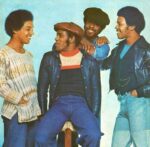 THERE AIN’T NOTHIN’ LIKE THE REAL THING, BABY
THERE AIN’T NOTHIN’ LIKE THE REAL THING, BABY
Now, I’m not much given to reviewing the telly; but on this case I’ll make an exception. The BBC 4 screening of ‘Everything – The Real Thing Story’ revealed an astonishing period piece and a real journey back to the most seminal year in my life, 1976.
I was an eighteen-year-old gigging jock working a balance of my own mobile gigs with Paul and agency gigs via New Junktion Discotheques, or NJD, probably the busiest and most prolific DJ agency in the East Midlands. We worked hard then; three gigs a day was not uncommon at the weekend, then lugging tons of vinyl around in clapped-out vehicles born in the sixties whilst wearing an evening suit in the middle of summer.
For me, it will always be the summer of an unloved sling-out single the other jocks didn’t want anything to do with but I loved; “Dancing Queen” by Abba – and a frantic charge to the top almost in spite of a total lack of cool. But it was also the summer of Jimmy James and the Vagabonds, Barry White, Billy Ocean, Philadelphia International…and in July, one single punched to the top on the dreadfully old-fashioned Pye Records, and stayed at number one for 3 weeks during that hottest of hot summers. Just like when Cliff finally got a handle on that authentic American rock ‘n’ roll sound with “Move It” back in the year I was born, finally, in 1976, a soul band emerged who sounded slick enough to be American and to this day I only think they made it to the top because nobody found them out until it was too late – apart from the fact it was a stonking tune, of course…and they were Scousers.
Scousers.
Let’s just give this some context here. This is a bona fide black British number 1 single during a year where singles sold in industry-defining numbers. And this at a time when casual racism of a different kind to that encountered today was absolutely endemic. If you were black British, it just wasn’t happening for you. And they did it. They got to number 1 in the UK and stayed there for three whole weeks.
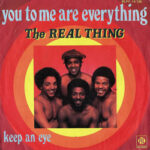 The Real Thing. “You To Me Are Everything”.
The Real Thing. “You To Me Are Everything”.
Paul worked with these guys on a few occasions as did most of the working jocks I grew up with including the Legendary Barry Jarvis and many more besides. They will always remain fixed in our memories, though, for the time Paul and I were broadcasting from the Newark Festival site as Newark FM about 20 years ago, and they were on the bill and played an amazing set. But for me the follow – up, “Can’t Get By Without You” always sits within the piece of flint I call a heart because, at the time, me and the future Mrs J were parted for the first and so far only time in our lives so I could clear off and Get Clever Somewhere, and at the time we had no way of knowing if/when that would be coming to an end. (And the usual dribbling lust stuff about wanting to live together when you’re 18 and it is the mid-seventies and you both live miles apart, that sort of thing.)
They started life as The Chants and were spotted by Paul McCartney, who arranged for The Beatles to back them on a number of occasions. They became The VPs (Vocal Perfection; I know, not the best name you’ve ever heard) and were re-named The Real Thing after their long-time manager, Tony Hall, had an epiphany moment when looking at an old Coke advert strapline. They got on ‘Opportunity Knocks’ with the unlovely Hughie Greene, a sort of prehistoric ‘X-Factor’ for those too young to know, and won, and even had a minor hit, but the record business just didn’t know what to do with a black British act in 1972.
They dropped the covers, released another single, which scraped the top 40 and even got on ‘Top Of The Pops’ but Savile, ‘just for fun’, reversed the band and song name intentionally as a jolly jape and nobody clocked the name as a consequence and that was that. But the club scene was changing and so was music. They grafted away, making commercials and jingles for production hotshot Jeff Wayne who was working on a little album which did alright in the end…”War Of The Worlds”. Their voice parts were eventually dropped from the album but the meeting did lead to them being introduced by Wayne to teen heart-throb David Essex who was on a hot streak which started in 1972 with UK top ten ‘Rock On’. They backed him in the studio and on tour and were transformed by their American tour with Essex. They dropped the matching suits and dance routines schtick and started picking up credible column inches from magazines like Black Echoes and Blues and Soul Magazine.
But that don’t pay no bills.
A few more singles stiffed and they finally met producer / songwriting team Ken Gold and Mick Denne in the spring of ’76. They’d written this little tune called “You to Me Are Everything” in about ten minutes. Simple beyond belief, it just hits the spot as a song, written by a man, for a woman he just can’t do enough for and therefore knows he’s on the ‘vulnerable’ list.
And the rest, as they say…
It was released to no great fanfare on 14th May, 1976. The band, consisting of the Amoo brothers, Eddie and Chris, and their childhood friends Dave Smith and Ray Lake, were potless at the time. Chris Amoo was so broke that when the single broke into the top 40 a few weeks later, he couldn’t afford the bus fare to his manager’s office. The Jenner lads nipped down to Frank Sisson’s record shop in downtown Hucknall and invested in a copy. Chris Amoo now had his bus fare.
It climbed to number 22 on the UK chart, with a bullet, the next week.
My diary tells me that between us we played 8 gigs that week. That’s how it was. We played it every night. Clubs, restaurants, pubs, weddings, you name it.
Gathered round the radio on Thursday…it’s up to number 5.
Next week, it’s at Number 1. And it stayed there for three whole weeks in the face of huge competition. Should have been massive in the States but a truly horrible cover by Frankie Valli murdered the single’s sales potential there.
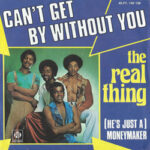 The follow-up, “Can’t Get By Without You”, was only prevented from going to the top by, you guessed it, Abba.
The follow-up, “Can’t Get By Without You”, was only prevented from going to the top by, you guessed it, Abba.
Home to Liverpool and here come ‘The Black Beatles’, which probably didn’t help much.
The first British Rock and Pop awards took place in November 1976. They won ‘Best New Group’.
Then they released their third single. It did OK enough to persuade them that writing their own stuff wasn’t a bad idea. But as American acts had learned over many years, just because you got to number 1 doesn’t make you exempt from ‘stop and search’.
Feeling increasingly straitjacketed by ‘the hits’, they produced “4 from 8”, as in Liverpool 8. And it was a whole bunch more funky and socially aware and less ‘poppy’ than ‘the hits’.
Pye spent a fortune promoting it and it stiffed. The gritty album sleeve was years ahead of its time for a UK album by a soul band and evoked the spirit of Marvin’s “What’s Going On”. The country would next hear from Liverpool 8 when Toxteth exploded in riots a couple of years later.
They admit they were a bit naïve. Radio playlisting is a binary choice. Play that. Don’t play that. That’s a hit. That isn’t. Programmers don’t spend ages losing sleep on the sociological implications of a song on popular music radio. Does it programme well? Is It A Hit?? Is pretty much the sum total of the consideration.
So, even though it didn’t do it at the time, “Children Of The Ghetto” became a slow burner, eventually getting the recognition it deserved and being covered by the likes of Courtney Pine and Mary J. Blige on the way to becoming accepted as the courageous ground-breaker it truly was.
“Whenever You Want My Love” got them back on the chart and on more familiar territory and that led to films like ‘The Stud’ with Joan Collins. This gave them a very dodgy disco hit with the truly awful “Let’s Go Disco” which to be the fair to the band they freely admit was just pish. I remember opening the envelope from the record company to find this in it, I played it once and binned it straight off. You’re better than that, lads.
A couple more minor hits and then another stonker, the stellar “Can You Feel the Force”. I’ve still got two 12 inch copies of this, one on horrible coloured vinyl and one being the exceedingly rare Jon Luongo remix version which would probably change hands for a few bobs given the right buyer. And then came the eighties, electro, new romanticism and suddenly they were yesterday’s news. And an astonishingly ill-advised tour of South Africa did their reputation No Good At All.
And then, a lifeline. One the likes of which has never been thrown to a band on this scale before or since.
Ten years after “You to Me Are Everything” was released, a ‘decade remix’ was issued. And, to the band’s astonishment, it went storming into the top ten.
The record company did the same with the band’s other old hits. Same thing happened. It was as if the summer of ’76 was being relived ten years later. Very weird. What wasn’t weird, though, was that by now, these lads were seasoned veterans who knew how it all worked and they weren’t about to make the same mistakes again. With the exception of original band member Ray Lake, who, struggling with inner demons which appeared to some to have roots in his early life in ‘care’, disappeared further into an abyss of drug-taking, eventually resorting to crime to feed his drug habit. He left the band in 1991, eventually succumbing to what some believe was an intentional heroin overdose nine years later. He was just 48.
The three remaining members, Chris and Eddie Amoo and Dave Smith continued gigging, gigging, gigging as The Real Thing; and as I’ve already mentioned, boy, did they play a blinder at the Newark Music festival when we were encamped there with Newark FM. It was also good to see fellow ‘Newarkee’, Leee John of Imagination, arguing their case during the documentary.
The film, directed and produced by Simon Sheridan, is played with a completely straight bat; it is an old school, unmessed – with documentary film with some cracking old footage and a melting pot of socio-musical wisdoms.
Sadly, older brother Eddie Amoo passed at the age of 73 shortly after the documentary was recorded. But Chris Amoo and Dave Smith are somewhere in the world right now being The Real Thing. Doing Everything. And That’s Not A Bad Thing, I would argue.
Just like you, The Riot Squad is going crazy at the lack of live music at the moment. We published a piece by Allan in February (just over three weeks before lockdown) celebrating the anniversary of his first gig in 1974. It was really popular and it was followed by a piece celebrating Steve Jenner’s first gig. After three months of musical famine we thought it would be good to ask some of our contributors and some of the artists we’ve reviewed in the past to write about a memorable gig that they saw or played. First out of the blocks was Danny Schmidt. We’re huge admirers of Danny’s work; he’s a gifted, erudite and passionate singer/songwriter (check out the review of his recent brace of singles “A Prayer for the Sane” and “2020 Vision”) and we’re delighted that he’s agreed to share this memory with us:
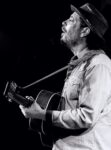
Danny Schmidt by Theo Looijmans
One of the most memorable live shows of my life was the night I saw Eric Johnson at Steamboat in Austin, TX on August 28th, 1990. I remember the date distinctly because it was the day after Stevie Ray Vaughan died. Having grown up in Austin, I was a massive fan of both Eric Johnson and Stevie Ray Vaughan. They were two of my biggest guitar heroes, and I saw them live every chance I got from the time I was old enough to attend live shows. And while their styles were vastly different, they were two branches descended off the same Jimi Hendrix-influenced tree. And as I understood it, they were each huge admirers of the other’s work, if not close personal friends.
In 1990, Eric Johnson’s star was really ascending quickly, and he played two sold out nights, back-to-back at Steamboat, and I had tickets to both nights. The first night was striking because Eric’s management team had upped the production value (and theatrics) of his live shows by having him enter the stage to a huge laser and smoke show, for several minutes, while he improvised riffs with his signature guitar tone, hidden from our view within the visual spectacle. And the guitar built the crowd into a frenzy before the smoke cleared, leaving Eric in a literal star of lasers and a single blinding spotlight from behind, full-on Guitar God, shredding the room from his monolithic place at the center of the stage. It worked my teenage self into an ecstatic state of guitar delirium. That was how the first night of the two-show stand began.
Late that night after we’d all gone home and gone to sleep, in another part of the country, Stevie Ray Vaughan’s helicopter crashed, ending his life tragically, at the age of 35 years old. We all learned of the news first thing the next morning.
The city of Austin was crushed, devastated. The town was silent and shocked. I felt hollow all day, in disbelief. That night, I had to drag myself to Eric’s show, night #2 at Steamboat.
Instead of smoke and lasers and high drama, Eric took the stage silently, no lights, no effects, no roaring feedback guitar, no PA announcer welcoming him to the stage. No one really knew the show was even starting. Instead, he just shuffled to the mic, more of a fragile slumped human being than a guitar god. And instead of shrieks of guitar, he gave a quiet, humble, candid, unrehearsed, vulnerable, heartfelt tribute to Stevie Ray Vaughan. He just told the crowd how much Stevie had meant to him, and how much his work had meant to him. The speech ended when he didn’t have anything else to say. He just stood in silence for an extra few awkward seconds, and then turned and picked up his guitar.
He then proceeded to draw fire from the strings, and fill the room with a whirlwind of sadness, madness, grief, angst, fury, exhaustion, all of it. He brought Stevie Ray’s Texas flood to life inside the walls of Steamboat.
Eric is truly a virtuoso. His technical skills are legendary, and even the hyperbolic statements about what his fingers are capable of doing on the strings are understatements. Some have questioned his musicality and the emotional connection to his songs, or the inaccessibility of his music sometimes. But on that particular night, we all bore witness to what’s possible when a bon afide virtuoso is channelling a well of emotion from the depth of his broken heart to the tips of his mythical fingers.
It was an experience that literally left us all speechless. As much as I remember Eric’s actual playing that night, I remember the faces of my two best friends who were with me at the show even clearer. Between every song we would look at each other and try and utter some sort of statement expressing how amazing it was what we had just witnessed. And instead, we could only stammer nonsensical sounds at each other, unable to form actual thoughts and words. And instead we would just hug or high-five. And then Eric would fire up the next song.
To this day, I can’t properly articulate the power and energy which swirled around the room that night, emanating from the stage, from Eric’s guitar, from Eric himself, with no theatrics . . . just a true master and a room full of open ears meeting together to share a night of grief and celebration. For me, that night set the bar for what’s emotionally possible throughs the kinetic power of music.
 Aaaaaagggghhh!! My ears!!
Aaaaaagggghhh!! My ears!!
AAAAAGGGGHHHHH!!!
That is SOOOO chuffing loud.
In an attempt to impress The Girlfriend (later wife, must have worked) I purchased two tickets with intelligent deployment of pocket money in December 1974 (could have been December ’63, why let the truth get in the way of a good yarn) in order to get to shake the dandruff to the latest and greatest exponents of your heads down, non–stop, mindless boogie.
AAAAAAGGGGHHHH!!!, again, I say. There’s loud and there’s 70s gig rock show loud. Nothing, and that’s nothing, prepares you for the onslaught of 70’s gig rock show loud.
The Beatles more or less ragged it in at the Shea because the weedy PA setups of the time meant they could hardly hear themselves play; but the lack of any intervention by local authorities – though it would soon come (see Paul in “Broadcast Brothers: On The Radio”) in terms of noise abatement meant that a wall of Marshall stacks = welcome to a life of tinnitus.
Very much still a ‘blues’ based 12-bar operation at the time, an investigation of the playlist from the tour reveals that they probably kicked off with “Junior’s Wailing” and featured “Railroad”, “Roll Over, Lay Down” and “Roadhouse Blues” before going off to a cross between a roar from the assembled male RAF greatcoat wearers (non-negotiable) and screams from the (largely) girls who had seen them a couple of times on Top Of The Pops – 1974 was indeed largely both sexist and tribal – before returning to chunder their poptastic path through the live DJ’s greatest fear, “Caroline” (‘oi, mush; play some Quo or I’ll do yer!!!’ – usually after the first slow dance of the night and ten minutes before ‘thengyew, gunnite’ and mains off) and “Bye, Bye Johnny”…
Coach down there, bunch of school mates and a few others can’t remember who, big, barn-like theatre (seemed like a cinema to me, but probably wasn’t) and possibly Snafu or Sassafrass in support but I can’t quite remember…Brushed denim loon pants wafting in the fan-assisted breeze…curtains of long, centre-parted hair tumbling over Telecasters…and LOUD. Very Loud Indeed.
Followed no doubt by the attempt to purchase alcohol whilst looking about 16 and sounding about 12. Fag smoke. Chips. 12 bar blues. Sort of 12 bar life. Back to school. Everybody has to sometimes Break the Rules.
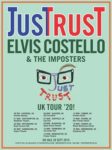 Oh, I just don’t know where to begin…Accidents Will Happen. In late 2018, this venue played host to the early dates of an Elvis Costello tour which didn’t get much further. He was diagnosed with a form of prostate cancer and despite some lurid headlines, he recovered and here he is back treading the boards many, many years after angry young manhood.
Oh, I just don’t know where to begin…Accidents Will Happen. In late 2018, this venue played host to the early dates of an Elvis Costello tour which didn’t get much further. He was diagnosed with a form of prostate cancer and despite some lurid headlines, he recovered and here he is back treading the boards many, many years after angry young manhood.
So it seems a little impolite to, well…I dunno.
The support act kind of underlined the problem here. Singer/songwriter Ian Prowse was very hale, hearty, full of verve, vigour and twinkle, a combination of scouse/Irish wit and charm and poppiness. Clearly thrilled to be playing such a big venue with such a ‘name’ he claimed his eight-year-old daughter came out to see him in Liverpool on the first night of the tour; and that was ‘the first time she’d seen him’ which I don’t think is quite what he meant. He also offered to buy everybody a drink if they met him at the merch stand after his set…careful, Ian. Last time one of our lot made a similar claim it cost me thousands. Seriously though he was very listenable as were his fellow troubadours but the lack of a bass guitar can very rarely be compensated for by a keyboard, I reckon. The final song in the set, “Does This Train Stop on Merseyside” is a bit of a stonker as well. Keep eyes and ears open for Ian Prowse. A good listen.
Elvis, on the other hand…the tour is called Just Trust 2020, and we kick off with a ‘sighter’ from the ’81 ‘Trust’ album, “Strict Time”. I usually allow bands one or two to get settled and to let any gremlins work their way out so we won’t dwell on this one much, followed by “Clubland” and “Greenshirt” which, although intense seemed to be pretty much all over the place mix-wise. I know the venue has a bit of a reputation for wayward sound but this was a really wild ride, a sort of rumbling, grumbling mess. It seemed to these ears that the opposite of what should have been the case was the truth; they were playing like they’d only just met. And with former Attractions Steve Naïve on keyboards (lots of them) and Pete Thomas on drums and with a settled line-up in the Imposters, this took me rather by surprise.
And come the first of the ‘Hits’, the towering majesty of “Accidents Will Happen”, another problem seems to emerge. Occasionally in later life, singers will not be able to hit particular notes. But this doesn’t seem to be the problem here…his vocal range still seems to be there…but the timing is all over the place and sometimes he just seems to be ‘chasing after’ the song; which is a problem for the sharp, angular, quick-fire demands of many of his older hits. His singers/dancers throw themselves about all over the place to give the impression of concerted, rhythmic responses to the music, but they can’t throw me off the scent. I dig in for an evening of irregular but profound wincing. Great, great song, though.
And then “Better Watch Your Step” and a clutch of others…but I’m SO distracted by now. It isn’t just the timing…he’s Very Flat on occasion…then he’ll throw in one of those soooo Elvis vocal trills and you’ll forgive him…and then for the next 30 seconds he sounds like he’s in the wrong key…the mix is beyond muddy and…I’m not sure he can actually hear himself. Can he hear himself?
“I Don’t Want To Go To Chelsea”. Love the song. She’s last year’s model. It’s a killer. Band layer it intensely but he’s chasing the song again…why? I can’t sing but I could probably read the lyrics so they’d actually ‘fit’ the song… all over the place…
…into one for the 2018 album “Suspect My Tears” and possibly because it was written when he was an older man, he does actually get this one to ‘fit’ and glory be, the mix slowly starts to get a bit tighter and more ‘approachable’. After which I’m treated to Elvis telling me he hates me in “Radio Radio” complete with bonkers ‘Farfisa’-style organ and intense and angst-filled playlist envy. Sorry Elvis. Just not radio-friendly, that one.
“Watching the Detectives” is, though. Backlit in eerie green, Costello as ‘spook’ comes to the fore and, at this juncture, it is important I mention the guitar playing. His various ancient and weird-looking guitars and barrage of foot pedals are no doubt very necessary for despite the barrage of keyboards Steve Nieve bounces around behind, there is only one guitarist and it is EC. And the guitar sound is universally excellent, very subtle and supple where required, very sharp and incisive in ways which the interesting but wayward voice now seems less than.
Sitting down at the piano we get the ‘country’ section of the show, including a quite rambling and off-key “Good Year for the Roses”. Always a broken heart/broken voice job, this seriously pushes the boundaries on that particular concept.
From that to another from the 2018 album “Look Now”, “Burnt Sugar is so Bitter” a song co-written by Carole King and this is a right old work-out on a song which tells one of the oldest stories in songwriting in a typically direct way. This worked really well, Steve Nieve’s rattling, empty ‘ice rink’ organ sound giving a hollow, almost ‘Northern Soul’ feel. And speaking of which…”High Fidelity”, a hit from the ‘soul’ album “Get Happy”, which once again, seems to leave his voice behind. Otherwise, just great. But…
“A Whisper to a Scream” jerks us back again to “Trust” and it is an intense delivery, which then melts in to the sublime “Alison” from the first album recorded for about six quid in 1976/7 depending on who you talk to. This is gorgeous and even though the voice does that wandering thing again there are moments within this when all is forgiven, just to hear it ‘live’ again; especially when that folds seamlessly into a marriage with Motown beauty “I’m Gonna Make You Love Me”. Every tune is working to a crescendo now and it would be spectacularly unfair to point out that despite the compromising of songs by a meandering voice, the audience are really warming to this and 80’s FM radio A-lister “Every Day I Write The Book” arrives right on cue and as described in the brochure.
And then “Pump it Up” nearly blows the roof off the place. At the end of it, this guy is a showman. Nobody is going to leave this venue feeling like they’ve been short-changed, I will say that much. And as is the current vogue for encore avoidance, the band stay on the stage and soak up well-deserved applause for a strong and professionally-delivered set. Not their fault the old lad’s struggling to hold a tune on occasion now.
And our final tunes for the night are the “Give Peace a Chance” section of the show and who can blame him? Certainly not I when this commences with “Shipbuilding”. Written by Costello and long-time Madness producer Clive Langer, I have to say I FAR prefer Robert Wyatt’s tremulous, fragile version but I’m here tonight and I’ll take this….but he’s off wandering again and he can’t point at not being able to live with the pace of the song here…and it’s all a bit so-so until he finishes the song on a shimmering, jazzy ‘When we could be diving for pearls’ which just seems to hang in the air and really does force listeners to face the compromises we make with the world in order to be ‘of’ the world.
Which, of course, rumbles straight into a spirited, very ‘dashing’ rock ‘n’ roll version of “Oliver’s Army” which ‘only’ got to Number 2, combining fairly ‘confrontational’ lyrics with the sort of piano that wouldn’t have sounded out of place on an Abba single. Part of our ‘Should have got to number 1; God, where were you?’ club repertoire, anyone would have been excused for thinking that was that, as it could well have been, but pacifist’s corner ended very appropriately and rather touchingly with Brinsley Schwarz’s “What’s So Funny ‘Bout) Peace, Love and Understanding” and that was indeed it, standing ovations all round the crowd no doubt shuffling off into a cold night warmed to the cockles by the memory of familiar tunes played stirringly….and how many of them would recall great acres of vocal creakiness the following morning?
Absolutely well worth going to see but an increasingly flawed masterpiece as the vocals struggle to live with the songs he’s created, I’d like to think he was throwing stuff about when he got off stage because he couldn’t hear what was going on or he’d just had an ‘off night’. But. Maybe it is Twilight Time.
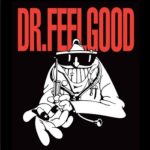 To paraphrase rock snapper Allan McKay, ‘in the unfortunate event of Armageddon, the only survivors will be rats, ants and the Technics 1200 record turntable. And Dr. Feelgood.’
To paraphrase rock snapper Allan McKay, ‘in the unfortunate event of Armageddon, the only survivors will be rats, ants and the Technics 1200 record turntable. And Dr. Feelgood.’
Starting out from Canvey Island in 1971, much has been made of the ‘no original members’ thing over the years. But you can trace the ‘blood line’ through this band going Way Back. As members have left or died, they’ve been replaced. Nothing ‘tributey’ about that. That’s reality. That, in part, is why I published “Rock ‘n’ Roll Twilight” in the first place. Bass man Phil Mitchell and drummer Kevin Morris have been with them since 1983, and so both recorded and toured extensively with main man Lee Brilleaux. Guitarist extraordinaire Steve Walwyn has been with the band since 1989; and even relative ‘newbie’, vocalist and harp player Robert Kane has fronted the Feelgoods for over 20 years, celebrating his 1000th Dr. Feelgood gig as long ago as 2007.
So let’s have none of that ridiculous sniffiness. As George Michael once said, ‘listen without prejudice’ (though admittedly that didn’t turn out well).
First though, a bit of a larff.
John Otway and Wild Willy Barrett first entered my flat by stealth when in 1977 Polydor Records sent me a copy of a single called “Really Free”. Like many record labels they were desperately casting around for ‘punk’ acts to sign in ’76/77 and picked this lot up from Pete Townsend’s Track Records label as they were basically taking what amounted to a scattergun approach but amongst the dreck this decidedly odd little single stood out. We gave it some plays, radio picked up on it and within what seemed like five minutes the duo were ‘On Top Of The Pops’ in time-honoured fashion and it became a ‘proper’ top 40 hit in the days when that meant Selling Stuff. The only problem being that as far as his musical partner is concerned, John Otway is a Complete Prat. A most unlikely ‘pop star’, he took the fast route back to obscurity by winning an international gurning award on Top of the Pops, and famously making a complete ass of himself by unsuccessfully attempting to hurdle a PA stack on BBC 2’s ‘The Old Grey Whistle Test’ TV show and ending up with his knackers in a splint. It could have been A Lot Worse.
He then proceeded to pay for the rest of his ticket back to nowhere by releasing a full-on, big-production ballad, “Geneve”, which completely stiffed despite the record company spending eye-watering amounts of money on promoting it (and record companies don’t forget that sort of error of judgment in a hurry) and, to further compound spectacular failure, not telling his musical partner WWB that he had neglected to give him a ‘name check’ and it was in effect a solo record for no other reason than that he did SO want to be a ‘proper’ ‘pop star’. Mr. Barrett was on his way to a gig at the time with Mr. Otway when he heard it introduced on the radio. Strangely enough, he didn’t turn up to play the gig that night and the duo had the first of about 27 ‘splits’ thus far.
Back on stage together and both now either 70 or pushing it, on first appearances it is difficult to resist the conclusion that for some strange reason the ghost of author Roald Dahl has dyed his hair black and decided to tour with a grumpy version of half of Chas and Dave. And a Wheelie Bin. More later.
However, be that as it may, we are treated to a spirited gallop through ‘Louisa on a Horse”, their second single, sort of accompanied by a scraping, raking fiddle contribution by Barrett. This is followed by ‘The Hit’, which they make a monument out of, informing the assembled ‘this is as good as it gets – the bar is over there!’ and stopping part way through in order to drag five minutes out of the thing. By which time, half the audience are in hysterics and the other half are wide-mouthed and not necessarily in admiration.
“Beware of the Flowers” features Barrett on Wheelie Bin. When he wishes to make a contribution to proceedings he opens a brown wheelie bin which is strategically placed by his side which contains an FX machine from which emanates ‘rock guitar’ noises and other things, brilliantly timed with deceptively well-rehearsed comedy in the opening and closing of the bin (no, really! Very funny indeed. I will take the recyc out with some trepidation after this.)
They then make a spirited but ill-judged attempt to pay tribute to Rolf Harris’s “Two Little Boys”. I always thought seeing as Rolf had done a cover of Led Zeppelin’s “Stairway to Heaven”, Robert Plant and his mates might have at least returned the compliment by having a shot at said tune, but no. It is left to Otway and Barrett to right a historical wrong. Which isn’t a good thing, necessarily…
Otway then explains the reasons for the 27th split being Barrett’s refusal to play encores so the audience are encouraged to go for the compromise which is that they’d stay onstage whilst the audience make a whole load of noise and then they’d do “Geneve” as a ‘not’ encore. During which shenanigans Barrett takes a tenon saw and tries to cut the acoustic he’s playing in half (whilst playing it), then assaulting it with a hammer before stomping all over it for no apparent reason. Then and once again inexplicably a set of bagpipes disguised as Bagpuss come into play. Otway then sweeps off like the ‘star’ he ‘is’ and Barrett is left onstage to offer the mangled cheapo acoustic, which cost him £30, to the first member of the audience to stump up £33 (inc artistic ‘tax’) as a charitable donation at the merch. Ermm…….I was only massively entertained. Never left a show which has Otway in it anything other than grinning like an idiot. And this was no exception. Folk meets pop meets rock meets country, somewhere around the crossroads marked English Eccentricity.
But let us not delay too long here as this is all about the Feelgoods. On the band march at the allotted time, to a Friday night ‘full house’ welcome and straight away you can see they’ve clocked this could be Very Good Indeed. There is already a sense that we’re Having It.
We start with a whole bunch of ‘oldies’; “Drives Me Wild” as a ‘sighter’ whilst they bring Robert Kane’s mike forward a bit in the mix, “No Mo Do Yakomo”, I Can Tell” where Steve Walwyn lets that flamethrower Telecaster loose for the first time tonight, “Been Down So Long” and “Down by the Jetty” which once again reminds the assembled what a wealth of great R and B songs this band have in their locker which very rarely troubled the UK singles chart (but goodness me, they shifted some albums).
The next segment of the evening’s proceedings features Steve Walwyn on slide guitar with some great blues vocals and harp stabs by Robert Kane. This guy is a great rock singer by any measure but can he sing the blues….it is no surprise he was with The Animals 2 before he joined the Feelgoods. Anyone who at any point found himself in Eric Burdon’s shoes is, we can perhaps agree, none too dusty, but the band reel off a vinegar version of Elmore James “Dust my Broom”, “Rollin’ and Tumblin” and of course whilst you’ve got the correct weapon to hand, “Back In The Night”, their mid-seventies jukebox shaker which introduced a whole bunch of Brit rock fans to the Joy of Slide, if Rory Gallagher hadn’t already done so.
This, then, is the first of the ‘juke box hits’ section of the show as we gallop in rapid sequence through a jumping, pulsating “Roxette”, taking a few minutes out for a slow blues band showcase in “Shotgun Blues” where all the band members show what they can do. Steve Walwyn makes a claim to be the best guitarist Dr Feelgood ever had (and not only the longest-serving) at this point (controversial, I know; when you’re talking Gypie Mayo and Wilko Johnson as the primary contenders) and Phil Mitchell’s rumbling, sinuous bass is absolutely killer here, and then we’re off to shake that jukebox again as we blast through a rabble-rousing if slightly misfiring version of “Milk and Alcohol”, and a spirited rip through the thoroughly ‘wired’ “She’s A Wind Up” followed by the sharp, ‘all elbows and knees’ jerkiness of “She Does It Right”.
Everything they do has that precision of the heavily-gigged professional rock act. This is no occasional run out, or a 20-date travelling circus. This is what they do and what this band has done, in venues of this size and bigger and smaller, since 1971. That’s nearly 50 years. And I shudder to think how many gigs the band has done in that time.
After that and in a perfectly-judged set there’s a mélange of what should have been a massive radio drivetime hit “Going Back Home”, “Down At The Doctors” (Got to number 48 on the UK singles chart…….hellowwww…..!) “Gimme One More Shot” and they’re off.
And of course they’re not going to get off that lightly. We do indeed get one more shot and it’s a spectacularly dense and intense “Mad Man Blues” followed by the flip side of Roxette back in 1974, the ultimate encore machine, “Route 66” and then they ARE gone.
Never mind all the sniping about who’s who. These lads are rapidly becoming a national treasure in a world of phonies and one-trick-ponies. From the greasy sleaze of the ‘sneaking out the back door with a grin’ stories to the workaday, careworn, bluesy lyrics, from the red hot and rocking juke-box smashes to the smouldering, powerful blues workouts, this is the way to celebrate the end of the working week alright. Need a shot of Rhythm and Blues? Go see the Doctor. He might be considering retiring. Or he might, in some incarnation, just go on for another hundred years. Because Dr. Feelgood is a sort of collective; a sort of ‘idea’, born largely out of the energy and vision and drive of one Lee Brilleaux. But despite the fact that Lee isn’t around to see how well his insistence the band carried on after his death worked out……why stop now?
Postscript: And in the pub across from the venue afterwards, the esteemed and venerable Nook, we fell across the lucky man who is now the proud possessor of a sawn – off acoustic guitar. They didn’t event throw in the tenon saw for his £33.
Reckons it is going straight on e Bay.
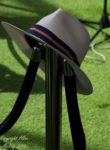 Just let me be completely serious here, the whole idea of reviewing albums and gigs and doing live music photography is something I wouldn’t have dreamt of ten years ago. Whatever gods you believe in, I will thank them for this opportunity. Every album I hear or gig I go to is another bonus and I truly appreciate it; I’ve made many friends as a result of doing this and had some wonderful times. Every year for the last five years or so, I’ve had few moments that stop me in my tracks and they’re still coming. Here are a few from 2019, in no particular order.
Just let me be completely serious here, the whole idea of reviewing albums and gigs and doing live music photography is something I wouldn’t have dreamt of ten years ago. Whatever gods you believe in, I will thank them for this opportunity. Every album I hear or gig I go to is another bonus and I truly appreciate it; I’ve made many friends as a result of doing this and had some wonderful times. Every year for the last five years or so, I’ve had few moments that stop me in my tracks and they’re still coming. Here are a few from 2019, in no particular order.
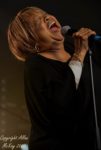 Mavis Staples @The Roundhouse
Mavis Staples @The Roundhouse
It wasn’t the first time I’ve had the opportunity to photograph Mavis; that was Cornbury Festival last year. This was different; it was the full-on show, the proper gig experience. Proper soundchecks, full-length sets and not having to dash off to shoot another band after the first three songs. And it didn’t hurt that the support for Mavis’s two gigs in England was Stone Foundation, my favourite current UK soul band; they rose to the occasion, powering through a tight set and grabbing the attention of an audience that had mainly come to see Mavis as part of the Innervisions Festival. I’d managed a couple of decent shots of her at Cornbury, but you never pass up an opportunity to photograph a legend again. Three songs from the pit, including a few that I’m still happy with, and then what? Get to the mixing desk, stand in front of it and enjoy the force of nature that is Mavis Staples and her band. The songs always had power, the band are totally on it and Mavis’s voice is undimmed by age. What a night.
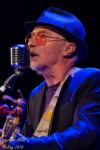 Interviewing Graham Parker
Interviewing Graham Parker
Bit of context here. As a student in the late seventies (I know, you work it out), I had access to a lot of gigs and I was just getting into gig photography (Olympus OM-1, if you’re interested). I spent a fair amount of time as a DJ with current MusicRiot contributor Steve Jenner. As a DJ at that time in Students’ Unions, you got a lot of freebies. One of the freebies that grabbed my attention was an EP by Graham Parker called The Pink Parker EP (the original limited edition was on pink vinyl) and it ignited a life-long love of this guy’s music. He’s now one of several musicians that I’ve photographed at an interval of four decades; you get the picture, I’m a fan.
Cutting to the chase, in February of 2019, a Graham Parker tour celebrating the fortieth anniversary of the album “Squeezing Out Sparks” was announced and one of the dates was The Foxlowe Theatre in Leek, one of my favourite small theatres in one of my favourite small towns, coincidentally the current hometown of Mr Jenner. Tickets were bought and as the year went on, I thought it might be a good idea to collaborate with Steve on an interview with GP if we could swing it. Turns out (with the intervention of Neil Sheasby from Stone Foundation), we could. So, on Friday October 22nd in Leek, I found myself sitting with my oldest mate Steve Jenner opposite Graham Parker with a microphone between us. If you’ve got half an hour to spare, you can listen to it here:
It’s the first time I’ve been happy to use an interview as a podcast, rather than transcribing the whole thing. It was a bit of moment.
 Sam Tanner album launch @The Half Moon
Sam Tanner album launch @The Half Moon
Heard of Sam Tanner? You really should have, he’s the man. Sam sings, writes songs and plays keyboards, but that really doesn’t do him justice. He’s the funkiest keyboard player I’ve heard, his songs are incredibly powerful and then there’s the voice. As a keyboard player and soul singer in the UK, the obvious comparison is Paul Carrack. I’ve seen both several times and I have to say my money’s on Sam. I first got to hear of him as a member of Mollie Marriott’s band, then as member of Brother Strut (check out this Ed Sheeran cover) before bumping into him at various gigs around town. All of that talent and it turns out he’s a really nice guy as well.
For the launch gig for his solo album he pulled out all the stops (thinly-disguised organ player gag) with a full band, horn section and backing vocalists (Mollie Marriott and Izzy Chase). This was a quality line-up with the kind of players that could follow any changes and sounded incredible. Sam was on top form vocally and even dealt with audience members talking in his trademark gentle way: “If you’re going talk along, can you do it in B flat because that’s the key the next song’s in…”. Superb band, superb vocals and lovely atmosphere; I floated back to Putney station.
 Dana Immanuel & the Stolen Band @The Forum
Dana Immanuel & the Stolen Band @The Forum
While I’m ‘fessing up to all the bands I love, I can’t miss out Dana Immanuel and the Stolen Band. I love these people as artists and as people. In October, I saw the band three times. Each gig was special in its own way, but a support set at The Forum with a full house was a huge opportunity. The band supported Polish eighties punk band Kult who still have a huge following in the UK. It can be difficult playing support to a band with a hugely partisan following, but Dana had a secret weapon (besides having a great band). Fiddle player Basia is Polish and did various links and introductions in her home tongue, which the audience loved. It’s a fabulous feeling to see one of your favourite bands get a rapturous reception at a big gig on their own manor. I suspect I’ll be at a few more Stolen Band gigs in 2020.
 Poetry
Poetry
I know it seems unlikely, but I got back into poetry. Over the last few years, I’ve become a fan and friend of the songwriting colossus that is Phil Burdett. It’s been no secret that Phil’s had some issues over the last few years and working on his poetry is something that’s been therapeutic. This year, Phil published a volume of poetry and prose (it’s very good and you can buy it here) and launched it at The Railway Hotel in Southend-on Sea with a performance featuring spoken word and songs aided and abetted by his long-time collaborator Steve Stott, playing the usual mandolin and fiddle. I’d forgotten how good it is to hear poetry performed live and wasn’t remotely surprised at the way Phil aced his first live recital. And the songs with Mr Stott sounded bloody good as well. As if this wasn’t enough, Ralph Dartford supported Phil with the launch of his latest volume, “Recovery Songs” and also went down a storm. The audience was perfect; totally silent during the performances and noisily appreciative at the end of each piece
And there’s still more. A few weeks later, Ralph launched (no pun intended) his volume, “Recovery Songs” from a floating bookshop on the Regent’s Canal in King’s Cross, supported by Phil and Steve. Not quite such a captive audience, but great to see people walking along the towpath stop to listen. Those two volumes are probably the first new poetry I’ve bought since “The Mersey Sound”. Another bonus was that I had the chance to have beer with some very interesting musicians, which is a theme that crops up elsewhere in these High Fives. There might be a good idea buried somewhere in that.
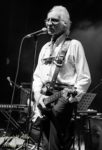 Nostalgia and a record
Nostalgia and a record
I can’t resist a bonus ball this time, inspired by the Graham Parker interview. In the same year that I first saw Graham Parker, I also saw a band from Birmingham that I’d heard a lot about, The Steve Gibbons Band. Imagine my surprise when I turned up to interview Southside Johnny at Shepherd’s Bush Empire in March to discover that Steve Gibbons had been added to the bill at short notice. Forty-two years isn’t my personal record for length of time between gigs I’ve seen an artist at; it ties with Brinsley Schwarz as a member of his band and as a duo with Graham Parker, but it’s quite impressive. My options for beating that record are pretty limited now; I think it might come down to seeing Ian Gomm or Billy Rankin again – just sayin’ guys, there’s a record to be broken here… To make everything perfect on the day, the interview went really well and the gig was absolutely storming. I love this job.
All images except Phil’s book cover courtesy of yours truly.
As you may have read in my review of Steve’s most recent book “Loud, Proud and Illegal”, he’s sold the commercial stations he part-owned to another company and found himself more ‘retired’ than he was earlier in the year. Didn’t last, though and he now finds himself presenting ‘Lovetown’, a selection of love songs, for a couple of hours between 11PM and 1AM five nights a week on Staffordshire Moorlands FM community station Moorlands Radio before flipping over to the digital-only service on Moorlands Xtra for the next two hours. Not only that but another couple of nascent stations have offered him the same slot on their stations, provisional upon them being awarded licenses next year, in effect syndicating his show in different parts of the country and others are showing an interest.
In order to celebrate this he’s listed fifty of his fave FM-friendly love songs on his ‘Broadcast Brothers’ Facebook page. Not being one overburdened with the work ethic these days, he’s sent the top five from this list in as his ‘Lovetown’ High Five this year.
5.Brenda Russell: “Piano in the Dark”
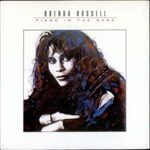 Very, very spooky this. This was the tune that was playing as I left the car headed for the Clifton tower block flat where I came within minutes of being Done for pirate broadcasting. (See Broadcast Brothers: On the Radio). It was also the scene of a weird one. The Clifton flats studio was draped in copious amounts of white material to deaden the sound a bit; and they only moved when the doors opened to let in the next presenter. So if those drapes moved significantly, you knew someone had just been admitted to the premises – and if this was unannounced, it was scarper time. I was playing this late one night coming towards the end of a show long forgotten now, with the legendary Josh in the studio with me feeding me the ad tapes. Suddenly, the drapes billowed, and we looked at each other…there was no-one to let anyone in, and neither of us had. ‘Funny,’ said the sadly now-departed Josh. ‘That happened the other night when we played this as well……’ Atmospheric, beautifully recorded (is that Michael McDonald I can hear in back?) and boy does she ‘sell’ this song. And with the tinkling of those ghostly ivories, every time I hear this I can’t help but think of all the pirate presenters and ‘staff’ who are no longer with us. And they are legion.
Very, very spooky this. This was the tune that was playing as I left the car headed for the Clifton tower block flat where I came within minutes of being Done for pirate broadcasting. (See Broadcast Brothers: On the Radio). It was also the scene of a weird one. The Clifton flats studio was draped in copious amounts of white material to deaden the sound a bit; and they only moved when the doors opened to let in the next presenter. So if those drapes moved significantly, you knew someone had just been admitted to the premises – and if this was unannounced, it was scarper time. I was playing this late one night coming towards the end of a show long forgotten now, with the legendary Josh in the studio with me feeding me the ad tapes. Suddenly, the drapes billowed, and we looked at each other…there was no-one to let anyone in, and neither of us had. ‘Funny,’ said the sadly now-departed Josh. ‘That happened the other night when we played this as well……’ Atmospheric, beautifully recorded (is that Michael McDonald I can hear in back?) and boy does she ‘sell’ this song. And with the tinkling of those ghostly ivories, every time I hear this I can’t help but think of all the pirate presenters and ‘staff’ who are no longer with us. And they are legion.
4.The Beach Boys: “God Only Knows”
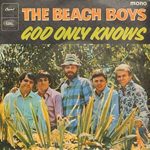 The first line of the lyrics is the most complete statement I’ve ever heard about the Lurv Thang in a song. You’ve got the strength balanced against the vulnerability; you’ve got the conviction versus the doubt. And you’ve also got the greatest production genius ever to draw breath, Brian Wilson, dragging all sorts of kit in through the studio door to deliver something where the marriage between killer tune, bullseye lyrics and sympathetic production has never, ever, seemed closer. It is perfect.
The first line of the lyrics is the most complete statement I’ve ever heard about the Lurv Thang in a song. You’ve got the strength balanced against the vulnerability; you’ve got the conviction versus the doubt. And you’ve also got the greatest production genius ever to draw breath, Brian Wilson, dragging all sorts of kit in through the studio door to deliver something where the marriage between killer tune, bullseye lyrics and sympathetic production has never, ever, seemed closer. It is perfect.
3.Linda Jones: “(For) Your Precious Love”
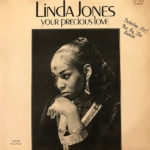 This was recorded by Jerry Butler of The Impressions in his usual controlled and dignified fashion. It was a decent sized US hit and their version is well worth a listen. But oh my my, approach this version with asbestos gloves. This is anything but dignified and in control. This is THE ‘torch song’ incarnate. This woman sounds absolutely driven beyond the normal compass of human emotion. The scream approaching the end is just brutal and she nearly loses control of the whole thing in the last few bars. Again I say DO NOT LISTEN TO THIS if you are doing break-up numbers. And do not listen if you’ve had a drink. It is quite rare now as a vinyl and you will have all on to find it in this country but it is all over t’internet. Biographical detail; she died at the age of 27 whilst sleeping between shows at the Harlem Apollo at her mum’s house. A long-time diabetic, she may well have slipped into a diabetic coma.
This was recorded by Jerry Butler of The Impressions in his usual controlled and dignified fashion. It was a decent sized US hit and their version is well worth a listen. But oh my my, approach this version with asbestos gloves. This is anything but dignified and in control. This is THE ‘torch song’ incarnate. This woman sounds absolutely driven beyond the normal compass of human emotion. The scream approaching the end is just brutal and she nearly loses control of the whole thing in the last few bars. Again I say DO NOT LISTEN TO THIS if you are doing break-up numbers. And do not listen if you’ve had a drink. It is quite rare now as a vinyl and you will have all on to find it in this country but it is all over t’internet. Biographical detail; she died at the age of 27 whilst sleeping between shows at the Harlem Apollo at her mum’s house. A long-time diabetic, she may well have slipped into a diabetic coma.
2.The Righteous Brothers: “You’ve Lost That Loving Feeling”
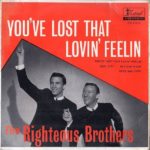 This is the most played record on American radio, ever. Let me say that again. Most. Played. US Radio. Can you even begin to imagine how much this has grossed? But you can see why within the first few bars. It is all there. The sullen accusation, the descending scale on the brass and strings, the doom – laden ‘wall of sound’ courtesy of Phil Spector and company, the despairing admission to himself that no matter what he does, It Is Over. The interplay between the near – hysterical falsetto of the late Bobby Hatfield – chalk another one off due to the Peruvian Marching Powder – and the deep, aching heartbreak of Bill Medley playing off against each other and the final ‘breakdown’ of the orchestra arrangement before the end you’ve got an immortal three minutes or so; even though you know the final plea ‘Bring Back – That Lovin’ Feelin’ has and will fall upon ears that have already gone deaf.
This is the most played record on American radio, ever. Let me say that again. Most. Played. US Radio. Can you even begin to imagine how much this has grossed? But you can see why within the first few bars. It is all there. The sullen accusation, the descending scale on the brass and strings, the doom – laden ‘wall of sound’ courtesy of Phil Spector and company, the despairing admission to himself that no matter what he does, It Is Over. The interplay between the near – hysterical falsetto of the late Bobby Hatfield – chalk another one off due to the Peruvian Marching Powder – and the deep, aching heartbreak of Bill Medley playing off against each other and the final ‘breakdown’ of the orchestra arrangement before the end you’ve got an immortal three minutes or so; even though you know the final plea ‘Bring Back – That Lovin’ Feelin’ has and will fall upon ears that have already gone deaf.
1.Billy Paul: Me and Mrs. Jones.
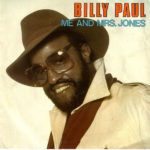 ‘We gotta thiiiiing going on’. Billy Paul pulls off the impossible here. On the face of it here, this is a seedy little tale about some furtive and probably sordid mutual extra – marital. And yet. The problem here is that you can’t help but be dragged into the tension, the yearning, the hurt and the difficult decisions. So much so that you find yourself identifying with and sympathising with the protagonists, against your better nature. Without Billy Paul’s stella vocal performance, which would have been reduced to the very ordinary by the classic ‘Barry White’-style delivery, this would have been just so-so and you be excused for walking away from it saying ‘serves ‘em right’. But the jazz tones in his staccato, top-end delivery mesh so beautifully with the near-glissando string arrangements, which meld with the horn section and just drift effortlessly with little sprinkles of audio angel dust here and there. And then there are the backing vocals to consider. How can anyone imbue the word ‘Thiiiiing….’ with so much soul power. Part jazz, part soul, all Philly dreamboat, this, for me, is the best FM radio love song of all time. Released in 1972, it got to number 12 in the UK top 40 and number 1 on Billboard in the US. Billy Paul died about three years ago, aged 80. But, I suspect for many years to come, he will still have a thiiing going on.
‘We gotta thiiiiing going on’. Billy Paul pulls off the impossible here. On the face of it here, this is a seedy little tale about some furtive and probably sordid mutual extra – marital. And yet. The problem here is that you can’t help but be dragged into the tension, the yearning, the hurt and the difficult decisions. So much so that you find yourself identifying with and sympathising with the protagonists, against your better nature. Without Billy Paul’s stella vocal performance, which would have been reduced to the very ordinary by the classic ‘Barry White’-style delivery, this would have been just so-so and you be excused for walking away from it saying ‘serves ‘em right’. But the jazz tones in his staccato, top-end delivery mesh so beautifully with the near-glissando string arrangements, which meld with the horn section and just drift effortlessly with little sprinkles of audio angel dust here and there. And then there are the backing vocals to consider. How can anyone imbue the word ‘Thiiiiing….’ with so much soul power. Part jazz, part soul, all Philly dreamboat, this, for me, is the best FM radio love song of all time. Released in 1972, it got to number 12 in the UK top 40 and number 1 on Billboard in the US. Billy Paul died about three years ago, aged 80. But, I suspect for many years to come, he will still have a thiiing going on.
Quick footnote: Our guess is that you’ll know four of these songs really well. If you haven’t heard the Linda Jones song you really should listen to it; it has the power of Millie Jackson at her very best. Obviously, as Steve says, don’t listen if you’re feeling fragile.
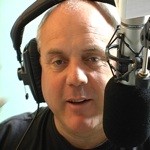 Our most regular contributor Steve Jenner, did a bit of a rock ‘n’ roll pilgrimage in late 2019 to get back to the roots of the music he loves, both as a listener and a radio presenter. Here’s his take on his favourite destinations on the tour taking in the rhythm ‘n’ blues and rock ‘n’ roll landmarks of America’s South.
Our most regular contributor Steve Jenner, did a bit of a rock ‘n’ roll pilgrimage in late 2019 to get back to the roots of the music he loves, both as a listener and a radio presenter. Here’s his take on his favourite destinations on the tour taking in the rhythm ‘n’ blues and rock ‘n’ roll landmarks of America’s South.
STAX, Memphis
The heavyweight champion as far as I’m concerned. The range of exhibits is just breathtaking, the stunning range of photographs, the specific instruments which grace the museum, the fact that they’ve got a restored version of the jukebox I have in my house…and the fact that the building itself just reeks of the opportunity it represented as an oasis of creativity and inter-racial harmony, the unifying factor being music, makes this place a pilgrimage, an education and a re-affirmation of the love which brings you here in the first place. Flight cases stamped ‘Isaac Hayes Movement’. Donald ‘Duck’ Dunn’s bass, Steve Cropper’s Telecaster. The pride with which WattStax is celebrated tells you all you need to know. This is the label where uncompromising soul music finally ‘gotten over’. Sell your goods and chattels and GO. The facility continues to do sterling work in the community changing lives for the better; but get selfish here. You WILL enrich your own life.
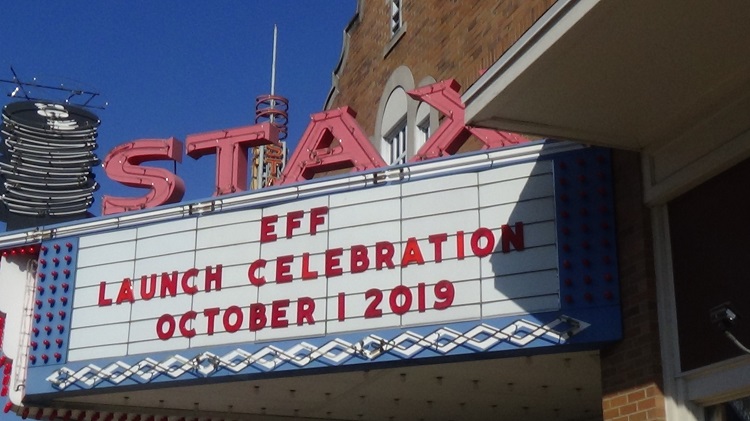
Sun Studios, Memphis
It would be sooooeasy for this to disappoint….but it doesn’t. Still a working studio, it actually feels like it. Not sure why they feel the need to play a Van Halen track as you ascend the stairs to the studio and small exhibition but once you’re up there…oh man. Where else are you likely to be within touching distance of a white-label demo of the first rock ‘n’ roll 78 RPM record, ever (Jackie Brenston, “Rocket 88” and I’ll brook no argument on this one.) The kit, the instruments…the room itself…and THAT microphone. The one the originators lit the blue touch paper to the cultural revolution with. Go, wait until the guide leaves the room, grasp the mic that launched a million hits and sing, as badly as you will, at least one line of a lyric that was recorded there. For me it was the first line from Billy Lee Riley’s “Red Hot”. Choose your weapon. And you will never feel the same again. I feel like some gold dust came off that mic and it hasn’t worn off yet and I don’t think it ever will.
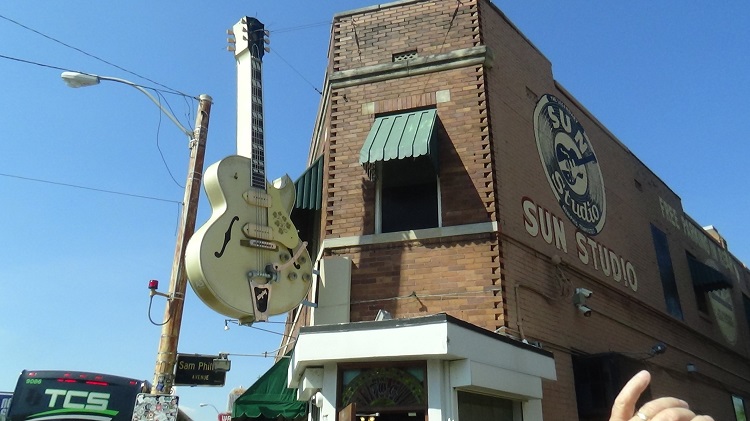
Rock ‘n’ Soul Museum, Memphis
It takes the breath away. The range and depth of artefacts alone would reduce a grown man to tears if they were piled up in the corner under an old tarpaulin but the presentation, sequencing and ‘staging’ of the exhibits means you can hardly tear your eyes away from anything, anywhere. From huge chunks of ancient radio station to detailed explanations of how key artists ‘became’, you just can’t afford to miss this one and it makes a Transatlantic trip worth the ticket price alone. And then you step outside and you’re a couple of hundred yards from Beale Street. And you are walking with your feet ten feet off.
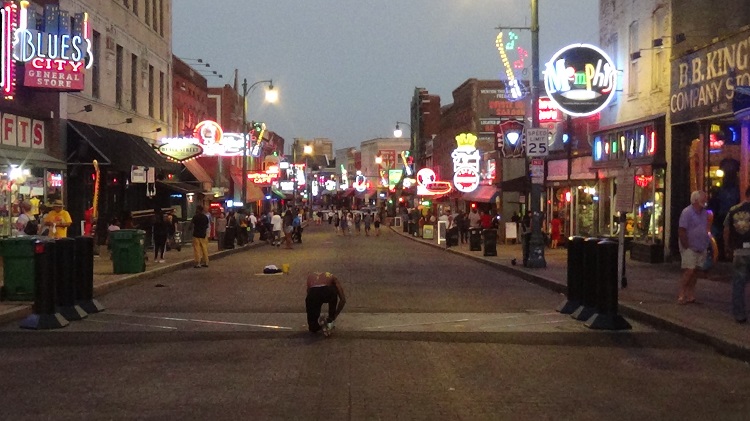
Gracelands, Memphis
I expected this to be much, much more tacky and a lot less interesting but still felt I just had to go. ‘I have reason to believe we all will be received in Gracelands’, right? Well, yes but it just shows what I know. Gracelands, the house, was actually a monument to a remarkably ‘normal’ life and if we disregard the loads of cars and a couple of planes, otherwise what might seem a reasonable wish list of toys for a top-end lawyer. And it seems quite small, ridiculous although that statement may appear, but very homely in a ‘seventies’ sort of way. Absolutely fascinating; and the garden of rest, where his mother, father and other family members are committed along with Presley’s remains is a real place of peace and reflection. The museum needs more energy than you’ve got in the Memphis heat to get through it all; and the range of costumes, cars, toys and paraphernalia is mind-boggling. House might be relatively modest…but he liked his transportation toys, did Elvis. And the costumes tell the story of the ultimate rock ‘n’ roll icon…who eventually went more ‘showbiz’ than showbiz itself. The true price of fame on an unprecedented scale, displayed alongside the attendant rewards; a parable for our times which sadly, many STILL don’t seem to have understood.
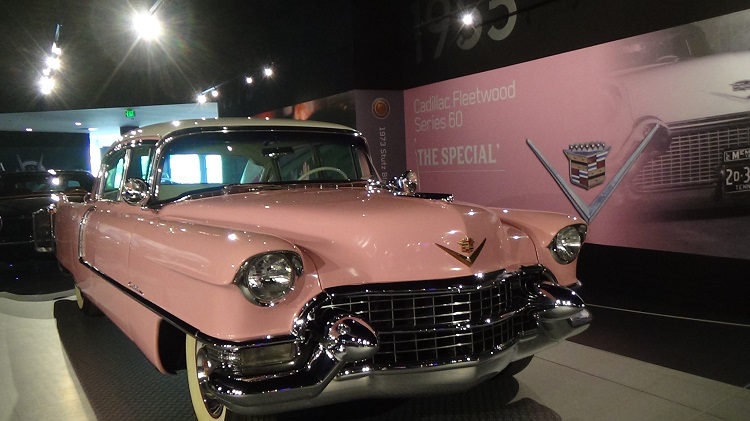
RCA Studio B, Nashville
Despite not being the greatest devotee of Jim Reeves, it cannot be denied that RCA Studio ‘B’ in Nashville has seen the recording of more hits than most big labels see in a lifetime from all sources. Most of Elvis’s biggest sellers were recorded here. Dolly Parton, Bobby Goldsboro, Charley Pride…on and on it goes. And once again you can cut the ‘atmosphere’ with a knife. I DID hear, and sense, the ghost of Elvis here. It was a throwback to 4AM, April 4th, 1960 when Elvis was recording “Are You Lonesome Tonight” here…in the dark. Ask her nicely and the studio guide will throw the light switch off and play you the original reel-to-reel of the original recording. ‘Saw the ghost of Elvis…then I watched him walk right through…’
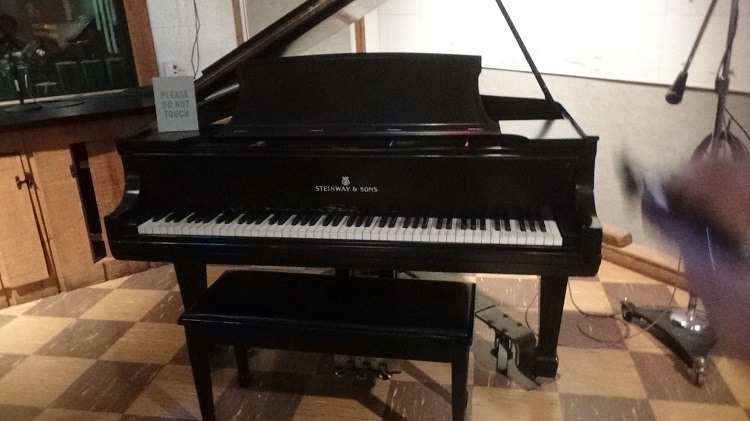
All photos courtesy of Sue Jenner.
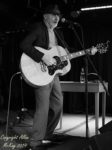 It’s a streaming wet and murky day in the Moorlands – and it pretty much doesn’t matter which set of Moorlands you’re in, it is giving way to a horrible ‘don’t bother’ kind of night.
It’s a streaming wet and murky day in the Moorlands – and it pretty much doesn’t matter which set of Moorlands you’re in, it is giving way to a horrible ‘don’t bother’ kind of night.
Graham Parker doesn’t need telling this. He’s just played the first date on a solo UK tour celebrating the release of an acoustic version of his best-selling UK hit album, ‘Squeezing out Sparks’, in Exeter and has spent six hours swapping one set of Moorlands scenery for the Staffordshire Moorlands. For tonight he’s set to play The Foxlowe Centre in Leek. And despite a nasty ‘tour cold’ and having to survive recording a near-on half-hour podcast and radio interview with Mr. McKay and I following the sound check, this sprightly, twinkly 60-plusser is in fine voice when he hits the stage.
He follows a short and perfectly fine set by Stephen Wilson Jnr and once he takes the stage, always a slight and quite unassuming figure, you’re once again reminded of the ‘nakedness’ of the solo acoustic performer. No ‘The Rumour’-style brass section to ‘lean on’ here. The songs either do the job, and the performer can ‘sell’ them, or they can’t.
It kind of helps, though if you’ve got a body of work spanning decades which includes 3 UK top 40 single hits, and 4 top 40 UK hit albums. “Squeezing out Sparks” got to number 22 on the UK album chart and went Gold in a number of territories and is the most ‘stripped down’ of the albums which troubled the UK chart, so that kind of helps as well, as does the knowledge and experience which comes from touring, incessantly, for more years than seems possible and guesting recently on tour with the likes of vinyl single chart-toppers Stone Foundation.
He kicks off with “Fool’s Gold” from 1976 and the album “Heat Treatment”. It was a great song then and is a great song now and Parker’s nasal rasp is the ideal vehicle. His voice does indeed sound needle sharp and his acerbic and self-deprecating wit between songs is an object lesson in how to entertain when you ain’t singing. He follows this with “Chloroform” from 2005 and the album “Songs of no Consequence” and we’re off and running. He already has the near-sell-out crowd eating out of his hand.
He candidly admits “Waiting for the UFOs” is probably the weakest song on “…..Sparks” but plays it anyway (Why, Graham? This has, in fairness, dated a bit) before a triple of “Every Saturday Nite” from recent album “Cloud Symbols”, “Stick to the Plan” and “Black Honey” all of which are played with humour, verve and panache by someone who knows how the tread the boards. He’s nobody’s idea of a world-beating guitar picker, but he’s perfected the art of using alternately a large acoustic and a Telecaster (not to mention a kazoo!!) to accompany himself to a perfectly appropriate effect, especially the acoustic, which he plays with a choppy, rhythmic style which ‘drives’ songs along. Another recent song in “Bathtub Gin” leads into the album opener on “….Sparks”, “Discovering Japan”. Often used a set opener when playing ‘full band’ gigs, this once again proves what an unusually-structured but striking piece this is in a live setting. Well into the ‘back nine’ now, he helter-skelters through to a paint stripping version of album title track “Howlin’ Wind”, which heralded the start of Parker’s recording career back in ’76, “Back to School Days” and a positively desperate-sounding ‘Stick To Me’. This was always a great song which all but disappeared under the ‘kitchen sink’ production which was thrown at it when the album was recorded and indeed it didn’t ‘do’ anything like as well as it should have done due to alleged cack-handed record company shenanigans (“Mercury Poisoning”, anyone?) and then a celebratory bundle of “White Honey” a top 40 UK hit on ‘The Pink Parker’ EP, “Is The Sun Out” and a blisteringly angry version of the new red vinyl single, “Nixon’s Rules”, which is ripping up a few trees as a searing critique of Britain’s failed and increasingly discredited drug policy.
He leaves the stage to rapturous applause to head off in to the next night on his UK tour, nursing a heavy cold but in the secure knowledge that man flu is temporary, class is permanent. He remains one of the few artists to emerge from the era of the ‘new wave’ with an ever-increasing appreciation of his qualities as a song writer and a performer; a reputation which, at the time, was probably ‘disguised’ and certainly under-appreciated by the demands of a very strange time. Bizarrely enough, as an artist, his time is probably Right Now. And it appears to me, watching him onstage in Leek tonight, that he’s clocked this. Go GP.


